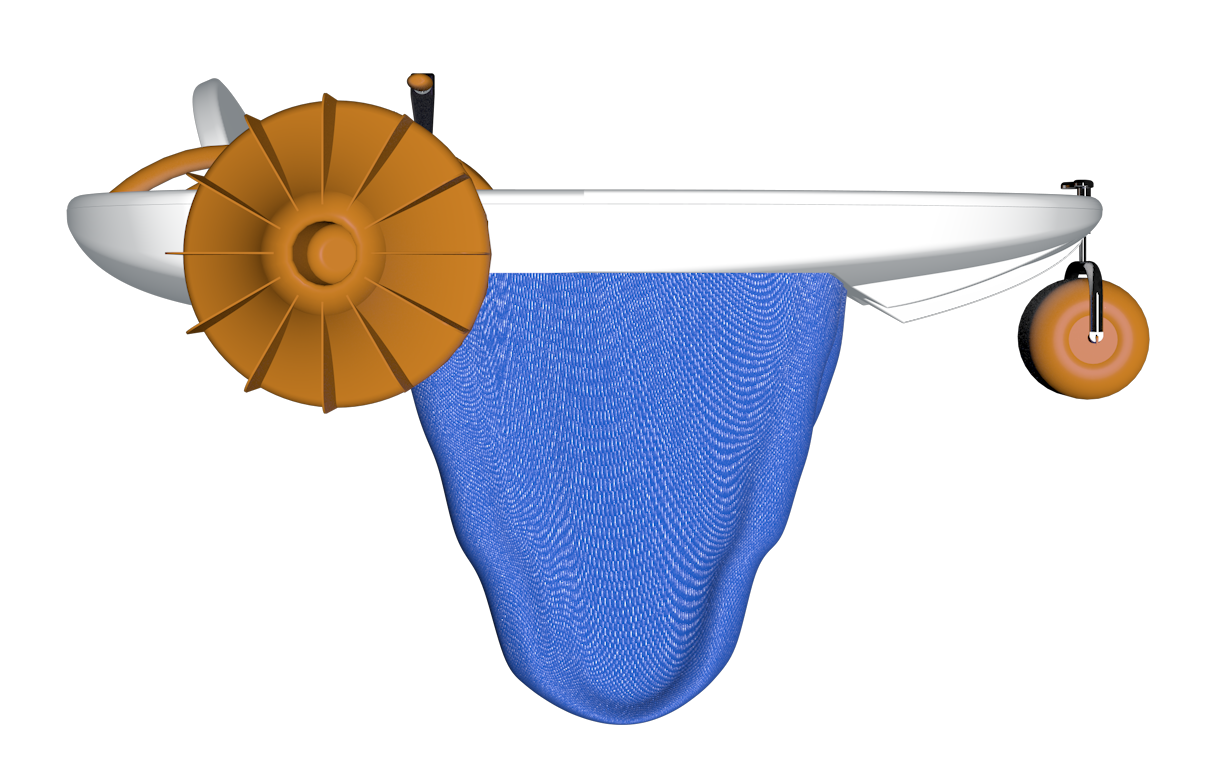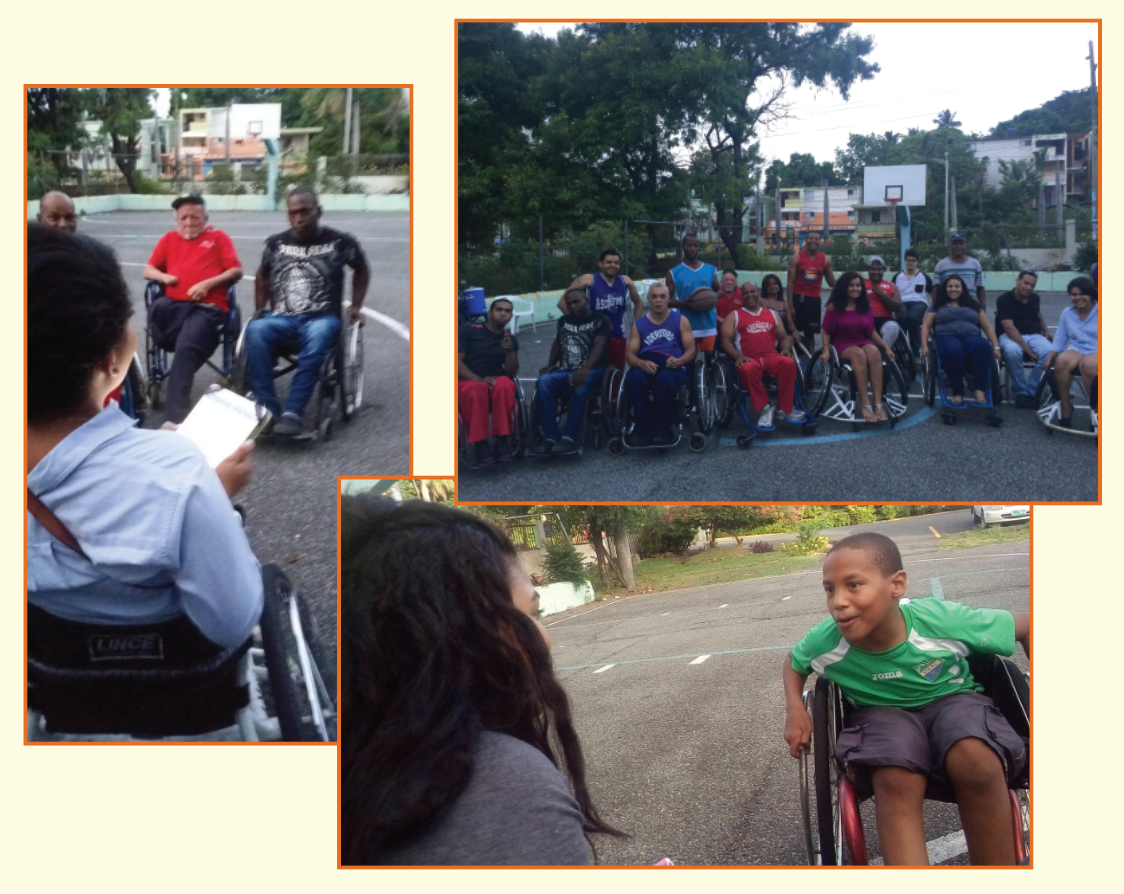Project Overview
- Project Duration: 2016-2019.
- Team Members: Jannie Espinosa Estrella, Luis Miguel Andújar, Ariana Pérez, Jenniffer Tavéras & Fernely Lebrón.
- My Role: It started as a university thesis project, for which we all acted as industrial designers in each phase of the project with the same responsibilities within the technical and visual parts. Apart from these functions, I was mainly in charge of making and presenting the pitches.
Brief
Planning a good vacation that allows you to live exciting experiences should not be limited to whether or not you have a disability. Through intense independent research and with professionals in the area of physical disabilities, we were able to verify that people with a physical disability condition tend to often isolate themselves and have fewer opportunities to recreate, especially in spaces that are considered as tourist spots, for example the beach. As a result of these discoveries, we decided to focus our project on developing a product that allows people who have a physical-motor disability in the lower part to be able to recreate autonomously, safely and easily on the beach.
Approach
We divided the product development process into the Design Thinking phases. Empathizing allowed us to get closer to our target user, think and feel what they feel in different areas of their daily lives, this also allowed us to more accurately define our design problem. For the ideation phase we used different tools that allowed us to flow with creativity, then we tested some of the concepts and from there we moved on to the prototyping phase, in which we created a functional prototype in which we did more tests, iterated and then we made final adjustments.
Outcome
The result of our work is Wara, an amphibious vehicle that allows people with lower physical-motor disabilities to enjoy the beach, both the sand area and the water, autonomously, easily and safely. Our design solution allows us to create the necessary conditions on the beaches so that they can receive more tourists, which also brings improvement and development to the country.
Important Statistics
+75 Million people around the world need a wheelchair on a daily basis.
World Health Organization
+400 thousand people in Dom. Rep. have some type of physical motor disability.
Org. of American States
+20 thousand health tourists are received each year in the Dom. Rep. and the required accessibility is not available.
Diario Libre Newspaper
+60% of people who have a physical motor disability want to do tourism and do not dare.
Conadis

Unique Design
Autonomous Use
The user can transfer from his wheelchair to our product, without help from anyone, then can ride the vehicle alone, both on the sand and on the beach.


Safe to Use
We took all necessary measures so that the user runs the least possible risk when using our product. That is why as an extra precautionary measure when it is in the water it has the possibility of unrolling a mesh that allows the user to float safely inside the vehicle.
International Utility Patent
Our innovative and functional design earned us the international utility patent DOU2017000011U.

01. Empathize
Consultation with experts
In our first phase we began with in-depth research with experts in the area of physical disabilities. We wanted to understand better what a physical disability is, what limitations or barriers people with disabilities face and what solutions are on the market or are being contemplated.
Key Insights
- Existing products are exported, so they have a higher price and waiting time and users must be assisted by other people.
- The beach is one of the least accessible environments for people with lower physical and motor disabilities and those who can access
beaches must have assistance at all times. - Other possible users with reduced mobility are the elderly, people who have had surgery and people with some type of injures.
- Transportation is one of the biggest drawbacks when doing tourism.


Design Problem
The beaches are one of the least accessible environments for people with lower physical and motor disabilities and those who can access beaches must have assistance at all times.


Role Playing
We spent an afternoon with a group of people with a physical dissability and tried to get around with a wheelchair as they do every day. Being in their place allowed us to feel helplessness, limitations, discomfort, more heat, extra effort and dependence.
02. Define
Design Objective
Design a product that allows people with a physical disability in the lower extremities, or with temporary limitations in that area, to be able to be autonomously, easily and safely on the beach, both in the sand and in the water.
03. Ideation
We began to use different tools that would allow us to arrive at the innovative and functional solution that we proposed for the project.
How Might We
In our HMW session we wanted to turn problems into opportunities and focus on other aspects of accessible tourism that are not just the limitations of the user with their wheelchair.
How might we make the beach bathe the user?
How might we make the life of a person with a disability more independent at the beach?
How might we make the user or product adapt to different enviroments?
How might we make the product fit the seat of a vehicle?
How might we make it suitable for daily use?
How might we make the user swim?
How might we make the product improve the user's health?
How might we make the user goes in and out the product?
How might we make the user enjoy themselves while sightseeing?
How might we make the wheelchair get inside the product?
How might we make the user use the product with their hands?
How might we make the product go down stairs?
How might we make our product fit two people, our user and another person?
How might we make the product integrated in the user's body?
How might we make a person with a disability dive?
How might we reduce the cost of the product?
How might we make the product not slippery?
How might we make our user able to jump?
How might we make the user transport themselves freely?
How might we make the product appealing for people with or without a physical dissability?

After our brainstorming and other ideation tools, we started to organize our ideas into concepts and themes, so we could then proceed to start sketches to dive deeper into the final concept to fully prototype and test.


Top 5
Use in sand and water
Reliability
Portability
Adaptability
Lightness



04. Prototyping
Testing Concepts
With a clearer idea of the product we wanted to design, we needed to test some of the key concepts we were focusing on, for that we scheduled a series of tests to be carried out on the beach and other similar environments.
Key Insights: Day at The Beach
- The entrance must allow you to reach the final destination without much effort or without any type of personal risk.
- The user must feel safe and their wheelchair must not be affected by sand or sea water.
- User should move around without help from other people.
- User should socialize with others in the same environment and with no limitations or discomfort from any person involve in the interaction.


More Testing
- First test consisted of making a person tie their legs to see how they handled themselves in the water and whether it was unstable or unsafe to use a life jacket when having a reduce movility in the legs.
- Second test consisted of seeing how a group of disabled people achieved get out of their wheelchairs and get on a giant cushion that simulated water and then go back to their wheelchair. All this to see how comfortable it is for them to go in and out the water.
- Third test consisted in testing the material we chose and to see how the shape of the prototype we wanted to build was going to perform inside the water.
Before Iteration

At the end of our prototype testing stage we were able to realize some changes that we should make to improve the product before building a functional prototype.
- We changed the design of the rear wheels to make it easier to use them in sand and water.
- We changed the gear mechanism that connects the wheels to the hand cranks.
- We changed from lever to hand cranks for greater user comfort when using the product.
After Iteration



Building The Prototype
With a final concept chosen, we were able to complete the sketches and technical drawings with their measurements and materials, then we began to build our prototype.
05. Test
Final Tests
For our final tests with the functional prototype, we scheduled two tests on the beach. We wanted to test the chosen materials, the size of the product, the safety and comfort for the user and the degree of real difficulty when moving the product in the sand and in the water using only the upper part of the body.
Product Measurements
The size of the product gave positive results, making it clear that it is appropriate for our users.
Safety and Comfort
We had average results for the issue of safety when using the product in water, which can be improved and in the issue of comfort it was positive for users.
Degree of Difficulty
Driving the vehicle with hand cranks gave positive results, however moving the wheels in the sand with the user inside the vehicle was not so simple, so it is something that we must take into consideration for our next prototype.
01. Test
02. Test
Test User: Patricio Lopez Fernandez, a Dominican Paralympic Swimmer.
Awards & Recognitions
- International Utility Patent DOU2017000011U.
- 1st place, Global Student Entrepreneur, Dom. Rep 2018.
- Special Recognition, Siempre Socios, Grupo Ramos 2018.
- Top 10 finalists, Reto Turismo Emprendedor 2018.
- 1st place in the tech & Innovation category, Premio Esquina Jóven 2017.
- Certificate of Excellence: Best Inventor, Innovative Solutions for Everyday Life, ONAPI-KIPO 2017.
- 2nd place, Pitch Americas 2017.
- Top 8 finalists, Cree Banreservas 2017.
- Ideas Brillantes CEI, INTEC 2016.













